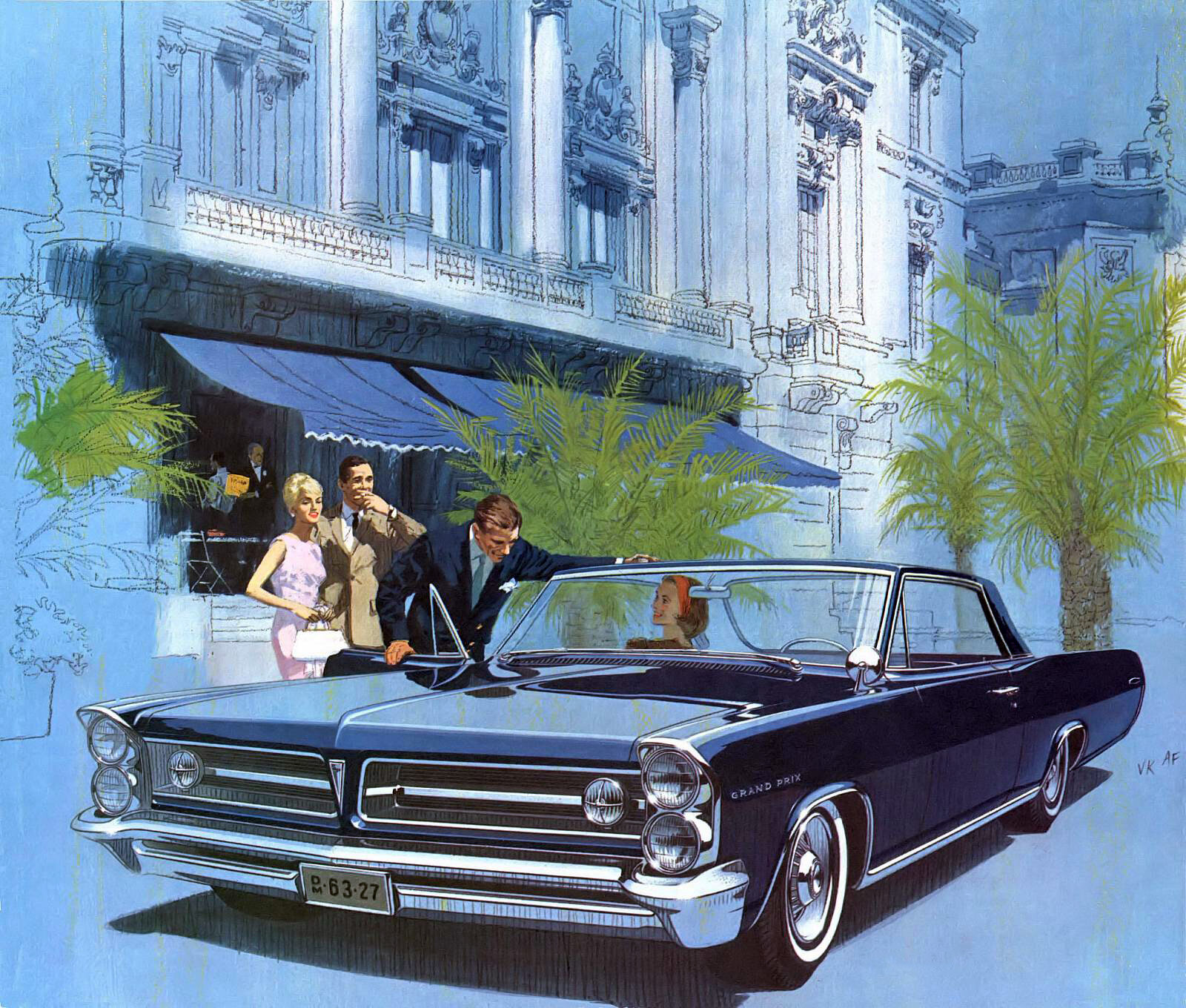1962-1978
Rushed to meet the deadline for a 1962 release - the final decision to create the Grand Prix came just a few months before new car announcement day. What was the big rush? Pontiac wanted to beat both Ford and Buick to the market with their new-for-1963 Thunderbird and Riviera personal luxury cars. A performance-oriented replacement for the Ventura, the Grand Prix was essentially a standard Catalina coupe with minimal chrome trim and sportier interior featuring bucket seats and center console. Head of Advanced Engineering at Pontiac, John Delorean contributed to the development of both the Grand Prix and the GTO. Early models were available with Pontiac performance options including the factory-raced Super Duty 421 cubic inch V8.
For 1963 the Grand Prix received revised sheet metal shared with full-size Pontiacs, though with its own squared-off roof line and concave rear window. Also new was Pontiac’s trademark split grille with vertical headlights and unique, hidden tail lights. Options included power steering, brakes, windows and drivers seat, air conditioning, eight-lug aluminum wheels with integrated brake drums, Safe-T-Track differential and cruise control.
A new line-up of optional engines was introduced for ‘63 including the 330 hp 389 Tri-Power and three versions of the larger 421 including the HO option with Tri-Power and a stonking 370 hp. Minor styling and trim changes occurred in ‘64, followed by a full restyle in 1965 that lasted through ‘67 featuring contemporary coke-bottle styling and stacked quad headlights. Though all-new, the 1967 model continued the popular coke-bottle hip motif whilst retaining the now-traditional Pontiac snout nose. New for 1967 were headlights concealed under vacuum operated retractable covers.
The Grand Prix established itself as a major player in the personal luxury car field through the late 1960s and into the ‘70s - always with a performance image some of the others lacked. Today it is the 1960s models that are most highly sort after, though 1970s Grand Prixs are becoming popular due to distinctive styling, a range of big block engines up to 455 cubic inches, and tasteful Pontiac instrument panels and interiors.






















































